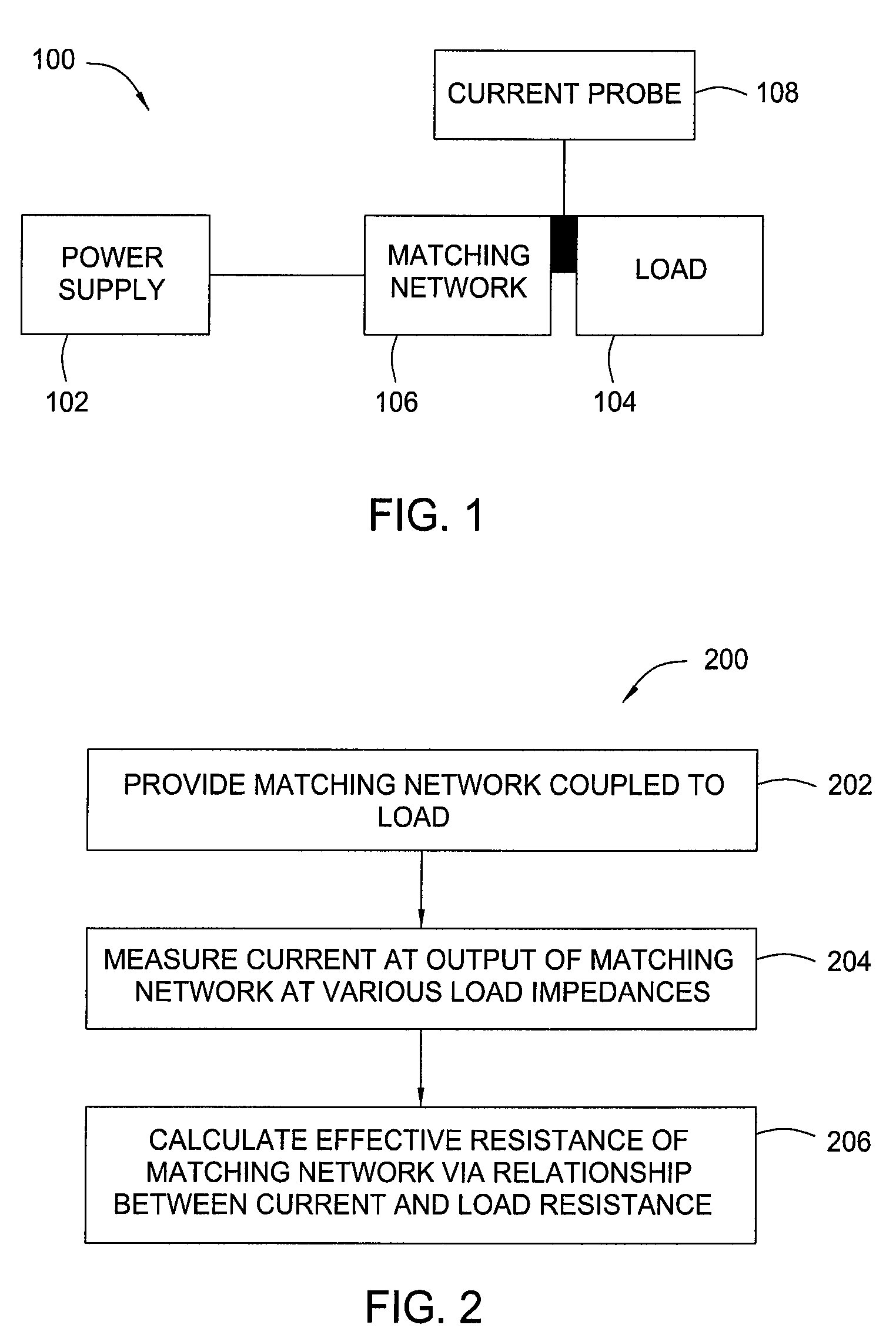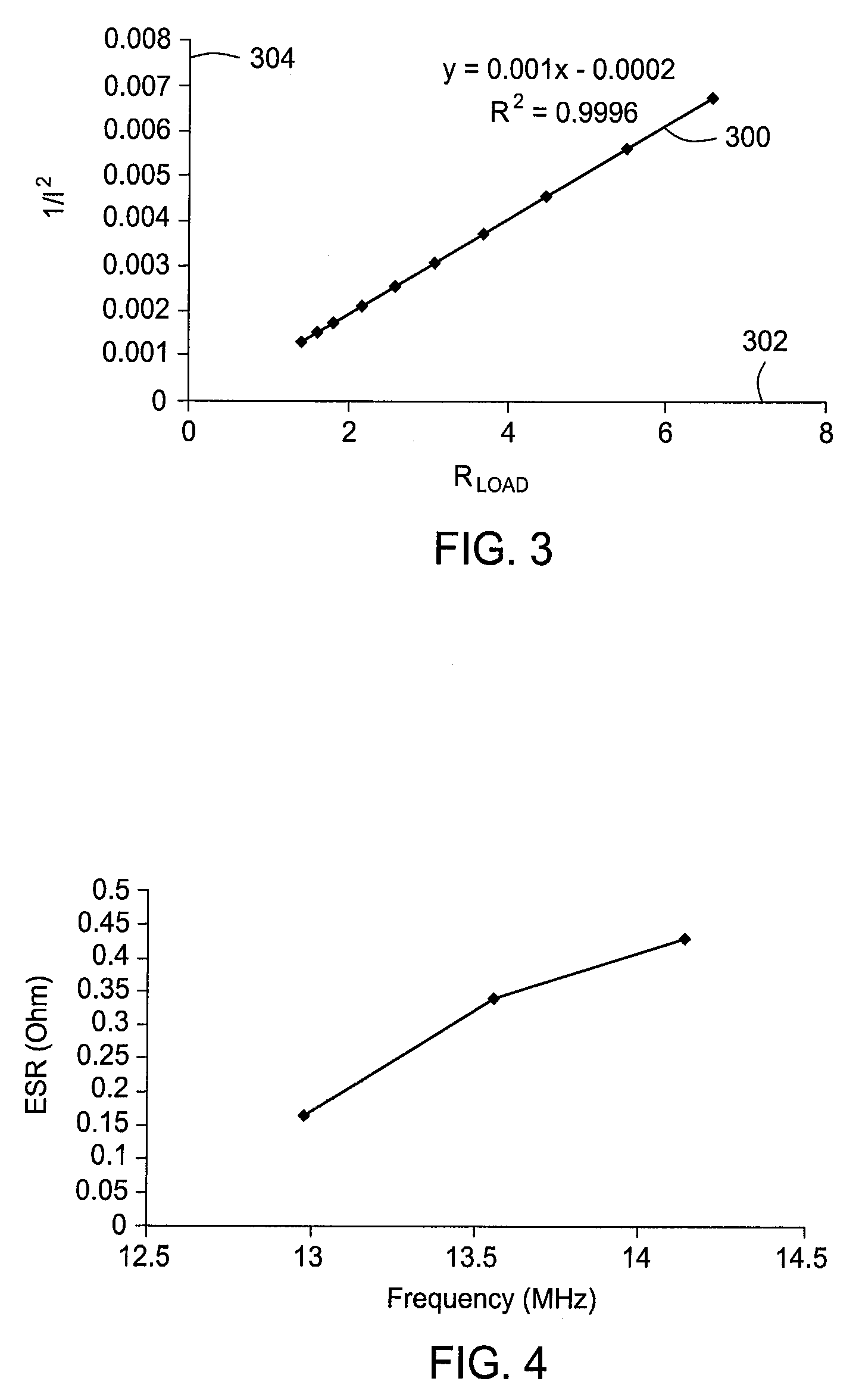Matching network characterization using variable impedance analysis
a technology of impedance analysis and matching network, which is applied in the direction of impedence matching network, semiconductor/solid-state device testing/measurement, instruments, etc., can solve the problems of reducing the accuracy of power measurement, increasing the inaccuracy of resistance calculation, and building a complex
- Summary
- Abstract
- Description
- Claims
- Application Information
AI Technical Summary
Benefits of technology
Problems solved by technology
Method used
Image
Examples
Embodiment Construction
[0016]The present invention generally provides a matching network analysis technique that operates to accurately approximate an equivalent series resistance (ESR) for the matching network through a series of matching network output extrapolations at various load resistances. The approximation of the ESR of the matching network allows for approximation of the matching network loss (also referred to as the insertion loss of the matching network) due to the series resistance at all points within the match tune space. The present invention also generally provides for matching networks characterized by methods in accordance with the present invention.
[0017]FIG. 1 illustrates a general block diagram of a system 100 suitable for characterizing a matching network in accordance with embodiments of the present invention. The system 100 generally includes a power supply 102 in communication with a load 104 through a matching network 106. A probe 108 is generally provided for measuring current ...
PUM
| Property | Measurement | Unit |
|---|---|---|
| complex impedance | aaaaa | aaaaa |
| total impedance | aaaaa | aaaaa |
| resistance | aaaaa | aaaaa |
Abstract
Description
Claims
Application Information
 Login to View More
Login to View More - R&D
- Intellectual Property
- Life Sciences
- Materials
- Tech Scout
- Unparalleled Data Quality
- Higher Quality Content
- 60% Fewer Hallucinations
Browse by: Latest US Patents, China's latest patents, Technical Efficacy Thesaurus, Application Domain, Technology Topic, Popular Technical Reports.
© 2025 PatSnap. All rights reserved.Legal|Privacy policy|Modern Slavery Act Transparency Statement|Sitemap|About US| Contact US: help@patsnap.com



